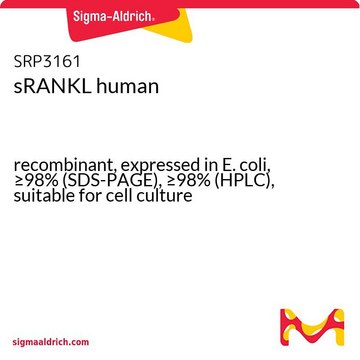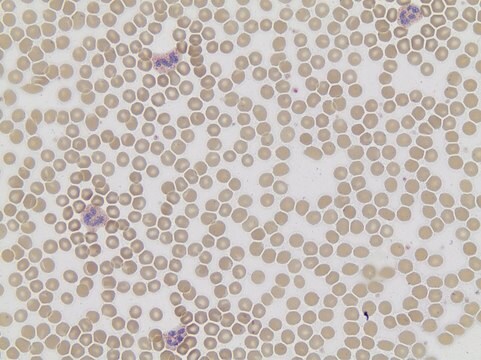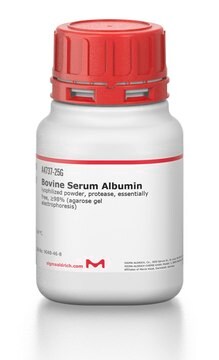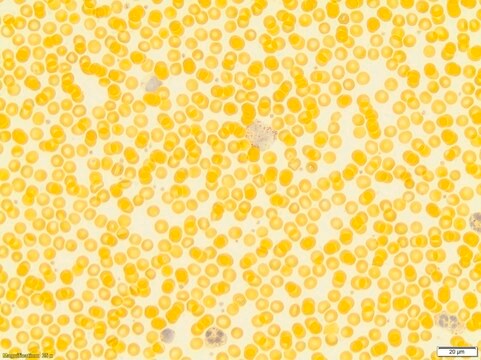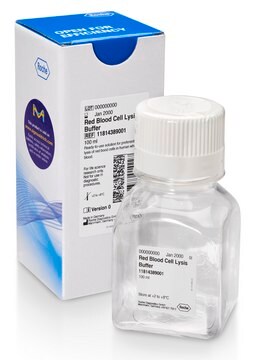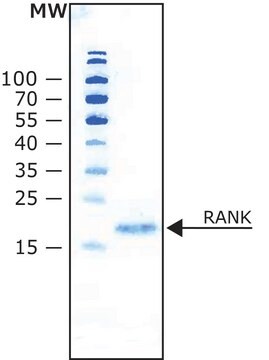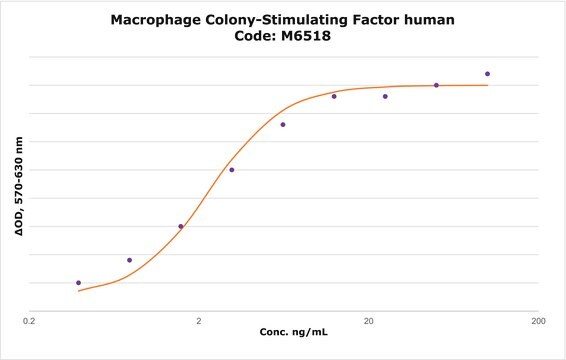GF091
Soluble RANK Ligand (sRANKL) Protein, Recombinant human
The recombinant human sRANKL protein is produced in E. Coli.
Synonym(s):
sRANKL, Soluble Receptor Activator of NF-Kappa B, TNFSF11, OPGL, ODF
About This Item
Recommended Products
biological source
human
Quality Level
recombinant
expressed in E. coli
Assay
>98% (SDS-PAGE and HPLC)
manufacturer/tradename
Chemicon®
technique(s)
cell culture | mammalian: suitable
impurities
<0.1 ng/μg Endotoxin (1EU/μg)
input
sample type mesenchymal stem cell(s)
NCBI accession no.
UniProt accession no.
shipped in
dry ice
Gene Information
human ... TNFSF11(8600)
General description
COUNTRY OF ORIGIN: USA
Physical form
Storage and Stability
Analysis Note
Legal Information
Disclaimer
Storage Class Code
11 - Combustible Solids
WGK
WGK 1
Regulatory Listings
Regulatory Listings are mainly provided for chemical products. Only limited information can be provided here for non-chemical products. No entry means none of the components are listed. It is the user’s obligation to ensure the safe and legal use of the product.
JAN Code
GF091:
Certificates of Analysis (COA)
Search for Certificates of Analysis (COA) by entering the products Lot/Batch Number. Lot and Batch Numbers can be found on a product’s label following the words ‘Lot’ or ‘Batch’.
Already Own This Product?
Find documentation for the products that you have recently purchased in the Document Library.
Customers Also Viewed
Our team of scientists has experience in all areas of research including Life Science, Material Science, Chemical Synthesis, Chromatography, Analytical and many others.
Contact Technical Service
